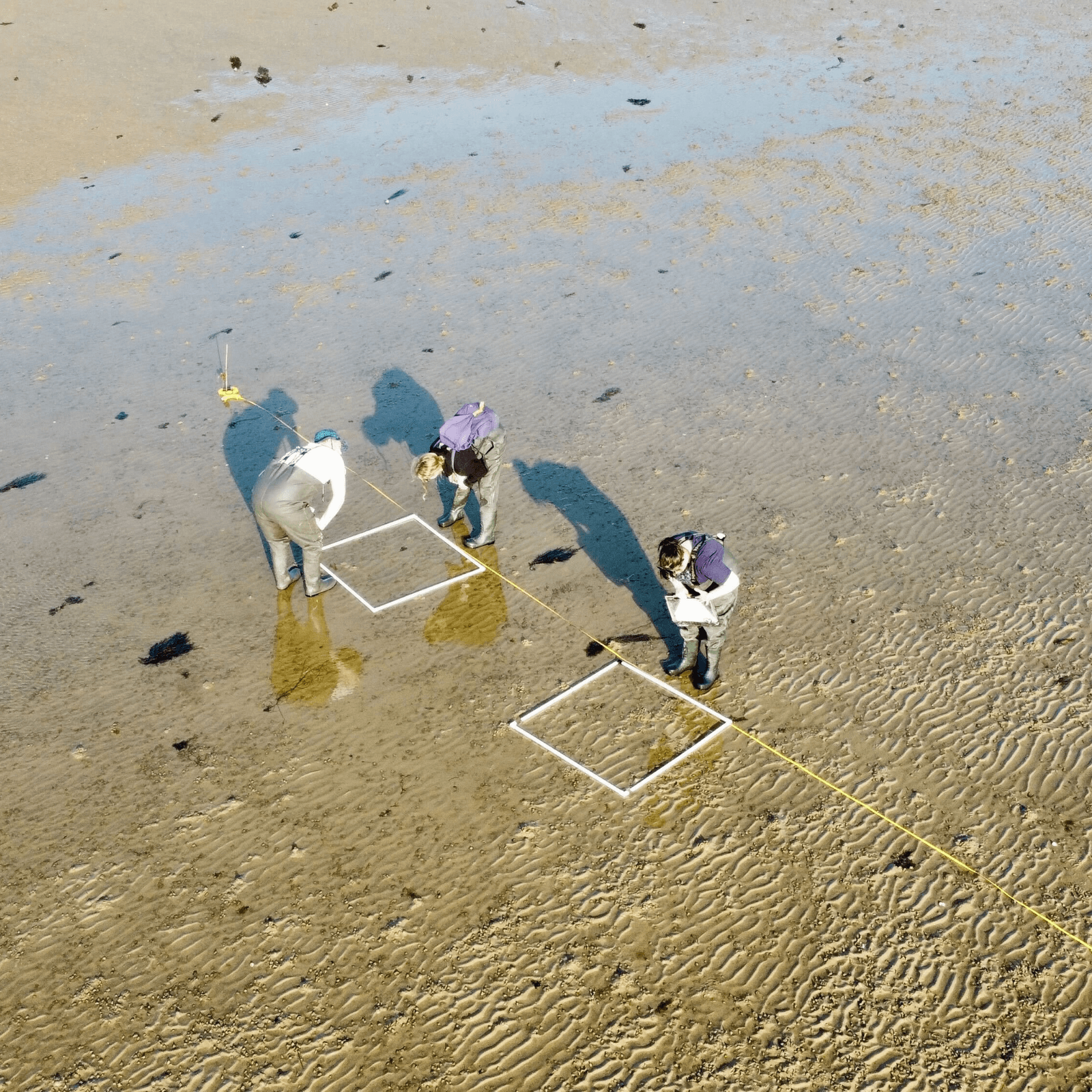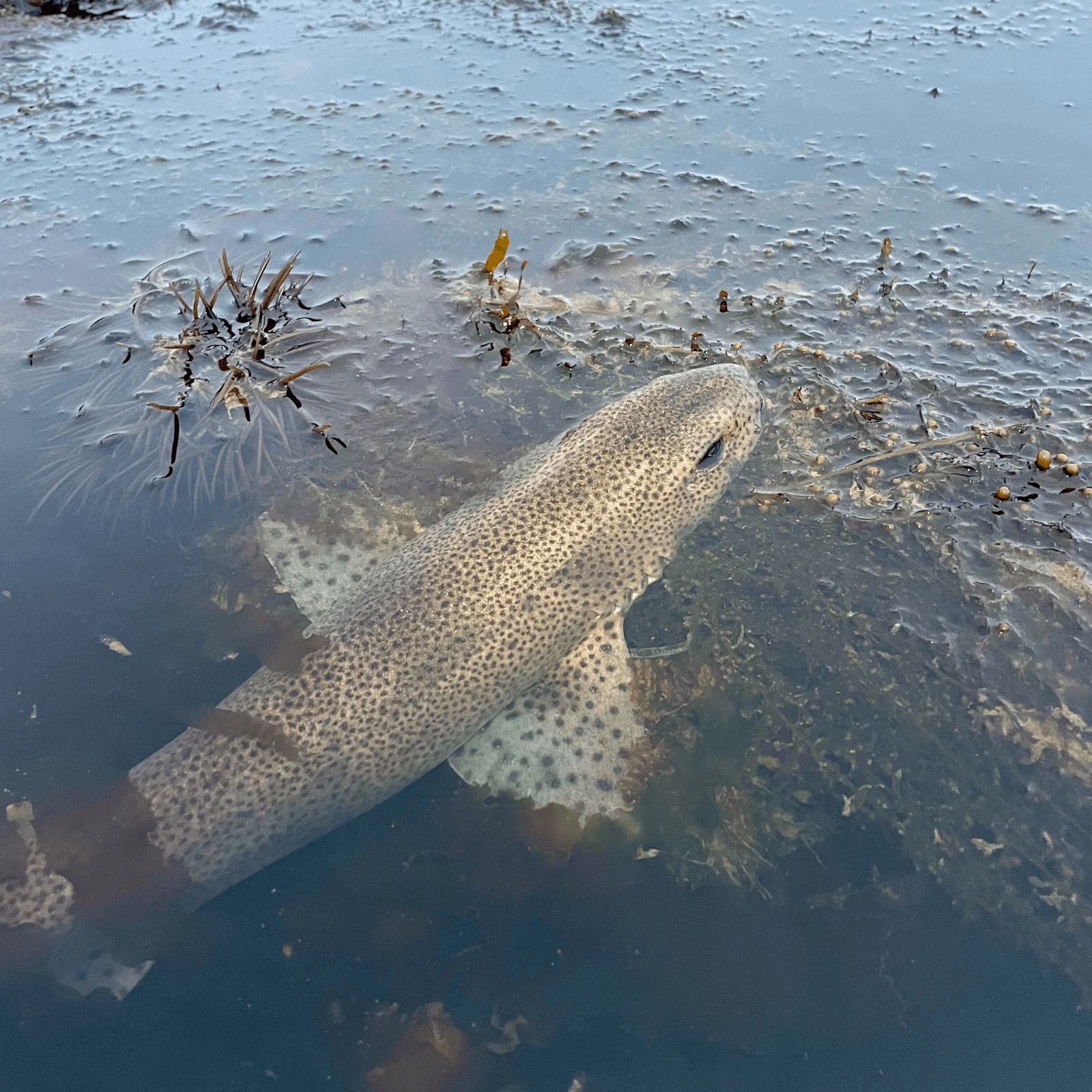- May 31, 2024
Content Team
Read our Project Leads’ fieldwork notes from May:
Solent Fieldwork (Anouska Mendzil, Solent Lead)
Solent fieldwork update: Day 1
- Myself and Manning arrived to the Isle of Wight around 14:00 and met Becky.
- We had an afternoon of preparation including labelling pins and mini-buoys, sorting kit, sorting data forms and configuring the mini-buoys.
- We monitored this years restoration plots at Priory Bay – all transplants remain in place and all plots with seeds (which we saw cotyledons growing last time) have fully germinated to become seedlings.
- We were joined by Liz, a volunteer, but also a Liz Earle staff member, making us a team of 4.
- We installed the mini-buoy and associated HOBO logger.
- I’m not convinced the existing seagrass meadow at Priory Bay is looking in a particularly healthy state, so I think there is monitoring requirement for this, there are however reproductive shoots present with seed development under way.
- We will be up on the early morning tide (5am) for Mannings project (data collection).
Solent fieldwork update: Day 3
- We started the day with 4:30 am beach sampling at Seaview for Mannings project, and managed to get some drone imagery of the meadow at Seaview and mooring scars. We also had a lovely surprising visit from a small spotted cat shark.
- We paid a visit to Cowes Island Sailing Club and met the secretary and dropped off some leaflets in anticipation for the club talk in November. The new Mermaid Garden (by Mermaid Gin) is part of the sailing club which looks great, so quite a nice full-circle collaboration and partnership developing between the three of us.
- Flo and Jo made it to us and we headed out for round 2 of monitoring at Priory Bay including the Solent Seascape Monitoring protocol. We also managed to download the HOBO data and get a few drone snaps here too.


Solent fieldwork update: Day 4
- We monitored our restoration planting sites at Thorness on the evening tide, installed the HOBO logger and Mini-Buoy, undertook Solent Seascape Monitoring and Manning managed to get another site for his project.
- Encouraging to see that the transplants from the donor meadow had reproductive shoots developing at both planting sites despite not having them when we picked them.
- Still lots of germination at Thorness but would say a bit slower and patchier than at Priory Bay
- We did a bit of a recce at Ryde to show Flo and Jo the area for the seed picking.
- Currently on the ferry over to Southampton and will make our way over to Beaulieu.
- We utilised the evening tide to undertake monitoring of all previous experimental planting plots – the mud at Beaulieu is as glorious as ever and even got the better of a few of us. No growth in any of the plots, and fragments seem to have also disappeared. Most of the plot pins remain in place. We downloaded the HOBO logger data.
- Myself, Flo and Becky headed for the early morning tide to do a recce of Lepe seagrass meadow. Surprising how inshore the meadow was and how different the sediment was there. Seagrass reproductive shoots are already maturing in this location and the meadow looks really healthy.
- Many fishers utilising the seagrass meadows this morning – they were after bass.
- Much of the day is cleaning, re-packing, data input and preparation for tomorrow’s engagement event.
- Myself and Manning are heading home shortly and Jo, Becky and Flo will attend tomorrow’s Family Conservation Awareness Day in Bucklers Hard.
South and West Wales Fieldwork (Emma Fox, South and West Wales Lead)
South and West Wales fieldwork update: Day 1
Five of us headed to Llanelli, to collect 75 Z.noltii cores from the donor meadow. The core collecting was easy and lovely in the heat. The struggle came when we were transporting the 75 transplants (which equates to 75 kgs) the mile’s walk back to the van with a slightly wobbly trolley. Nevertheless, the team pulled together and we managed well for 80% of the way, until we crossed paths with a cockler in a truck, who kindly offered to take the crates for the last part! We have since secured access to the meadow with a truck and so tomorrow, when we repeat the operation, it will be a lot smoother!
We found we still had plenty of time (very lucky to have a massive tidal window) and decided to push on and head over to our planting site. There the bamboo canes which Celia and I prepped two weeks ago were still in place and we planted out half of the cores before the tide finally started to come in. Ended the day with a debrief and ice-cream.
South and West Wales fieldwork update: Day 2
Today consisted of planting out the last of the cores in the remaining plots. It was nice that we’d halved the work for ourselves because it was also an opportunity for some stakeholder engagement, which meant we had plenty of time for chatting.
A good number of people popped down, including Judith (Carmarthen Bay & Estuaries European Marine Site Officer) who helped us out with the transplants, Paul (Carmarthen Conservation Co-ordinator) who is going to help us tomorrow with his truck.
Another debrief over ice cream to wrap up, before heading back to HQ to wash kit / prep for tomorrow.
South and West Wales fieldwork update: Day 3
Very similar to day 1, however we had a lift to and from the meadow which was amazing, much much needed to transport the transplants.
We also put out a HOBO logger into the Llanelli planting site, before returning late to the warehouse and started prepping for DIS tomorrow.
Emily meanwhile brought the Z.marina seeds across from the nursery to the warehouse, along with the Z.noltii which has been in the quarantine tank since August. This is staying in it’s holding tank until Sunday when we’ll be taking it back home (Essex).
South and West Wales fieldwork update: Day 4
We successfully planted out the 75 cores and 60,000 seeds.
Super proud of the team in delivering that, it was a tricky site to be working at. But it was wonderful waking up on Saturday morning knowing Cardiff was 75 cores and 60,000 seeds richer, and everyone put in an epic days work, to wrap up the S&W Wales fieldwork week.


Essex Fieldwork (Emma Fox, Essex Lead)
Essex fieldwork update Day 1
Travel day to Essex for Betti, Conor, Charles and myself.
Essex fieldwork update Day 2
115 transplants, plus 15 boxes from the nursery were planted with help from Essex Wildlife Trust, Life Recreation ReMEDIES and Environment Agency volunteers.


North Wales Fieldwork (Stijn den Haan, North Wales Lead)
North Wales fieldwork update: Day 1
Today we saw North Wales in all its glory.
The weather was excellent, the tide went out nicely, and we found our seedlings.
We were joined by Charlotte (North Wales Wildlife Trust) with 8 Ocean Rescue Champions, regular volunteers, and a placement student doing her MSc at Cardiff University.
On the beach, we found a fair number of seedlings from the seeds we planted by DIS back in February, which was a good start! Largest seedling so far: 120 mm.
Tomorrow we’re monitoring at Carreg y Defaid. That was by far the best site last year with many seedlings popping up over there – let’s see whether that continues to be the case.
And so, after a brief dGPS and HOBO logger training in our garden in Pwllheli, we headed to Carreg y Defaid where we were had volunteers joining us, arranged by Amlyn of the PLAS SAC.
Once we completed a quick demonstration on counting and measuring seagrass, we got to work and managed to monitor almost all manual DIS plots and a few of the seeding machine plots.
North Wales fieldwork update: Day 3
Today was mostly a repeat of yesterday: ridiculously nice weather, happy volunteers (British Mountaineering Council this time, plus our volunteer Bob), and we counted more seagrass.
The team is running like a well-oiled machine and our recurrent volunteers are so helpful.
We’ve finished monitoring all DIS plots, the hemp bag plots, the seeding machine plots, and the plots that were planted by Bob and Amlyn with washed-up fragments from the meadow at Porthdinllaen.
Tomorrow we’re back at Pen-y-Chain to wrap up the work over there, and on Friday we’re monitoring the transplants from the nursery at Carreg y Defaid.
An observation: there are many more epiphytes on the plants here at Carreg y Defaid than there were last year. The rocks near the beach entrance are also clearly covered by a lot of green algae – more than during any point last year based on memory.
North Wales fieldwork update: Day 4
Amel and Rich did SeagrassWatch training at Porthdinllaen.
The rest of the team and I were at Pen-y-Chain to monitor manual DIS plots, seeding machine plots, a few transplants, and last year’s seedlings.
We mapped our 2023 seedlings – these have now formed more patches than we could monitor in the time we had, and we found two reproductive shoots amongst them, so they are maturing!
We installed a mini buoy next to the HOBO logger, so there are now two active mini buoys in North Wales.
North Wales fieldwork update: Day 5
With the help of quite a few volunteers (including 3 NRW staff, Olivier Leger an ocean artist, and our volunteer Bob), we monitored the nursery-grown transplants.
The freshly-trained BSAC Snorkel Guides amongst our staff (Hannah, Amel, and Charles) then took the volunteers out for a snorkel tour in the crystal clear water.
We took a final picture together at Carreg y Defaid – weather conditions could not be better for fieldwork and for seagrass to grow.

